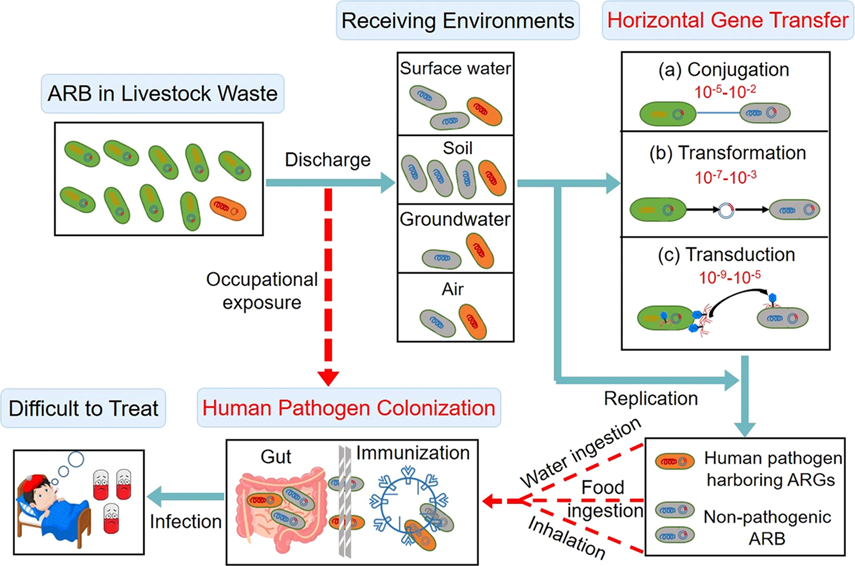Context:
Traditional livestock production systems place tremendous pressure on land, water, and natural resources. Moreover, they contribute significantly to greenhouse gas emissions, biodiversity loss, and the growing threat of Antimicrobial Resistance (AMR). As the global food system undergoes a transitional phase—marked by rising demand for protein—there is an urgent need for sustainable solutions. In this context, insect-based animal feed is emerging as a promising alternative.
AMR: A Growing Threat
- Antimicrobial Resistance (AMR) occurs when bacteria, viruses, or other pathogens become resistant to antimicrobial drugs, rendering them ineffective. This problem arises primarily from the excessive and improper use of antibiotics. As a result, even minor infections can become fatal.
- The overuse of antibiotics in livestock is now a global concern. It is estimated that global antibiotic use in livestock will reach 200,000 tonnes by 2030. This contributes to the generation of antibiotic-resistant bacteria (AMR genes), which pose a serious threat to human health.
- In particular, Low- and Middle-Income Countries (LMICs) continue to use antibiotics such as chloramphenicol, tylosin, and TCN mixtures—all of which are banned in developed countries. These substances are known to increase the risk of kidney failure, blood disorders, and certain cancers in humans.

Benefits of Insect-Based Animal Feed
1. Nutritionally Rich:
Insects are a rich source of high-quality protein, fats, fiber, zinc, calcium, and iron.
2. Environmentally Sustainable:
Insects can be raised on organic waste, which they efficiently convert into high-value protein at low cost.
3. Low Resource Requirement:
Insect farming requires significantly less land, water, and feed compared to traditional livestock.
4. Better Cost-Benefit Ratio:
Research shows that insect protein is more digestible and effective than soybean meal or fishmeal.
For example, 0.85 kg of black soldier fly protein can replace 1 kg of fishmeal in animal feed.
Policy Framework and Global Acceptance
More than 40 countries have formally approved the use of insects in animal feed. In India as well, insect-based feed is being seen as a "climate-smart" solution. The FAO (Food and Agriculture Organization) estimates that global food production must increase by 70% by 2050, with meat production expected to double.
Initiatives in India
The Indian Council of Agricultural Research (ICAR) and its affiliated institutions have undertaken several initiatives to promote insect-based feed in recent years:
- March 2023: ICAR-CIBA signed an MoU with Ultra Nutri India Pvt. Ltd. to explore the use of black soldier fly larvae (Hermetia illucens) in aquaculture feed.
- June 2024: CIBA signed another MoU with Bengaluru-based Loopworm to use insect-based protein in shrimp and Asian seabass feed.
- January 2025: ICAR-CMFRI entered a partnership with Bhairav Renderers, a Coimbatore-based firm, for further development.
Challenges and The Road Ahead
1. Cultural Acceptability:
In countries like India, accepting insects as food or feed still faces social and cultural resistance.
2. Policy Ambiguity:
India currently lacks a clear legal and regulatory framework for insect-based feed.
3. Industrial Standardization:
There is a need to develop guidelines for production, storage, and quality standards.
4. Investment in Research & Innovation:
Greater participation from research institutes, startups, and academia is needed to scale innovations.
Conclusion:
India’s shift towards insect-based animal feed is a progressive step from scientific, economic, and environmental standpoints. Not only does it help make livestock farming more sustainable, but it also holds potential to mitigate public health threats like AMR.
As the world gears up to address future food security and antibiotic resistance, such innovations could play a critical role in building a healthier, safer, and climate-resilient agricultural system.






